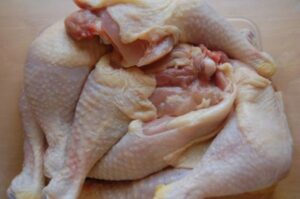No Rest for the Resistant: Deadly Salmonella Strains on the Rise

Increasingly high levels of antibiotics fed to livestock animals are causing antibiotic-resistant bacteria to become more potent, raising concerns from the Center for Science in the Public Interest via a petition to the USDA to prohibit the sale of contaminated meat and poultry.
Of specific concern are the four strains of antibiotic-resistant salmonella commonly found in animal products sold to consumers. But industry and regulatory agencies claim that proper cooking kills the pathogens, eliminating—or at least, significantly limiting—the risk of contamination. But, even the tiniest drop of uncooked liquid from an infected piece of meat landing on a cutting board or knife could cause major illness cites the CSPI.
The USDA eventually banned the deadly strain of E. coli 0157 that killed four Jack in the Box customers in 1994, and earlier this year the agency reportedly added six more strains of E. coli to its list. But that hasn’t been the case for salmonella, which is frequently found in raw meat, poultry and eggs; recalls only occur when a particularly threatening strain causes significant illness and shows resistance to antibiotics. And those cases are on the rise, cites the CSPI.
And while irradiating entire carcasses before sale is not likely to happen anytime soon, processors currently spray meats with antimicrobial substances designed to kill deadly microbes. But, as the high frequency of meat and poultry recalls indicate, it’s not a full-proof system. And banning the problematic salmonella isn’t quite likely either, as doing so would be a logistical nightmare for the industry, slowing production and increasing consumer costs.
More than 29 million pounds of antibiotics were fed to livestock in 2009 and directly correlate with resistant strains of campylobacter, salmonella and E. coli that have been connected with serious illnesses and death. To effectively kill bacteria, health experts recommend heating beef to 160 and poultry to 165 degrees Fahrenheit.
Keep in touch with Jill on Twitter @jillettinger
Image: snowpea&bokchoi

